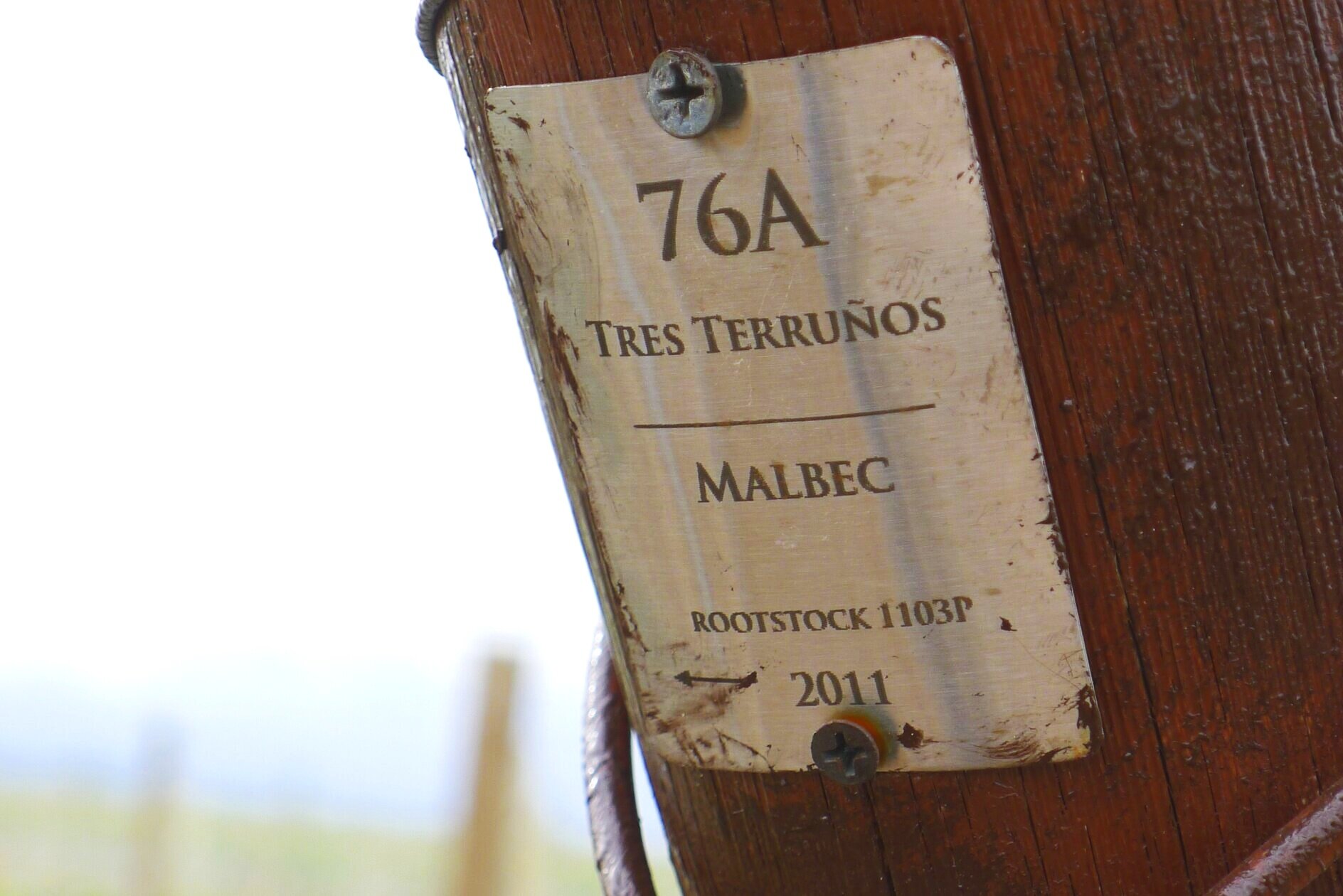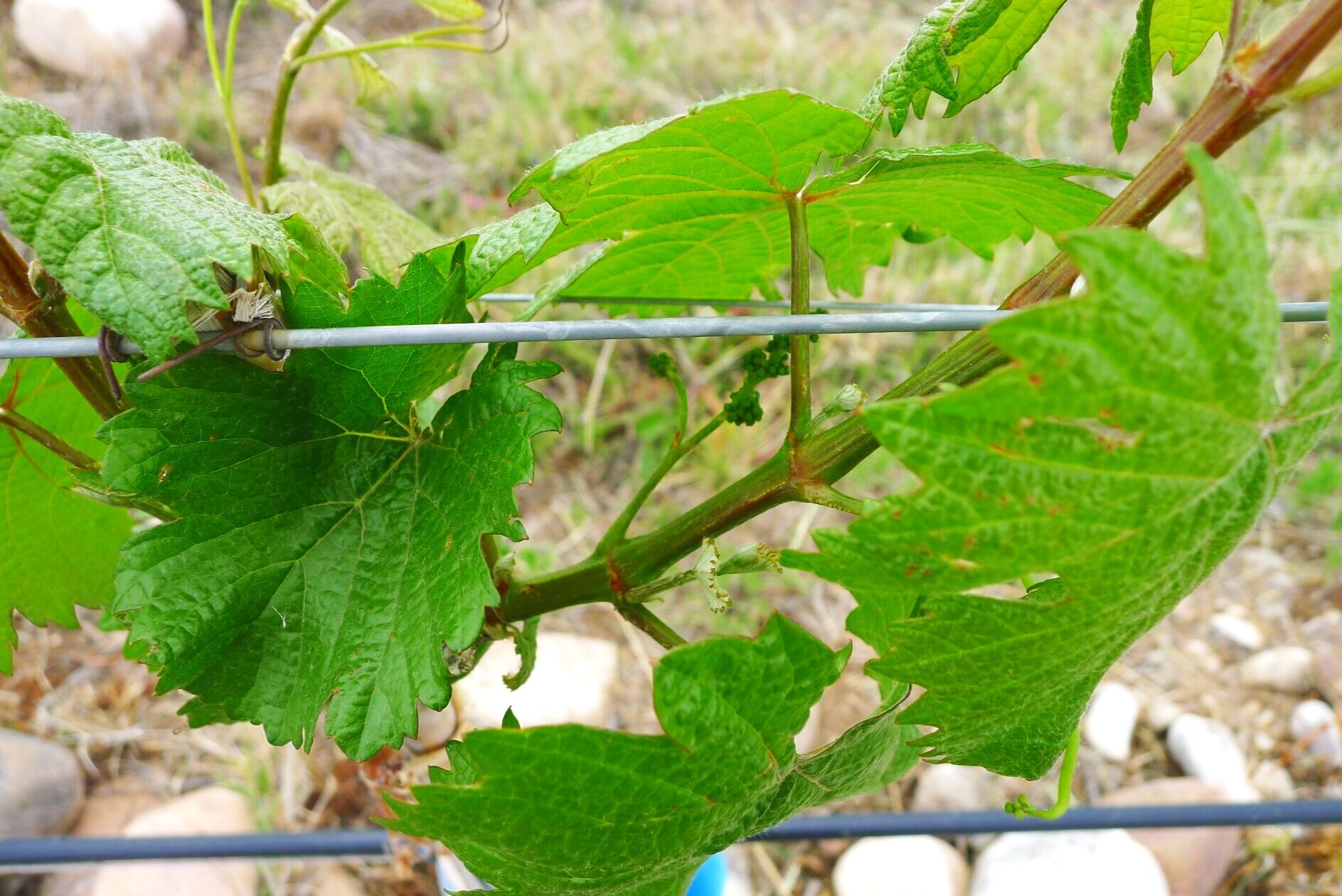Our goal is to nurture the most authentic expression of the varietals that thrive in this alluvial soil
The Place
The journey begins 3,000 feet above sea level in the Uco Valley, Mendoza, Argentina. Malbec and Cabernet Sauvignon vines are planted in the rocks, clay and sand that make up this rugged terruño (Spanish for terroir). The vines will produce strong root systems to nurture the grapes.
TRES TERRUÑOS
Tres Terruños, or “three from the land” roughly translated, is what we have named the vineyard. It marks our quest to craft interesting wine that speaks of the land from which it came.
after planting
The fragile vines are protected and supported as their root systems expand into the rocky terrain. The drip irrigation system is engineered to enable or restrict water flow to each individual plot. Ground cover between rows helps to keep the dust level down especially during zonda winds (the warm dry winds that blow down the eastern side of the Andes).
Row Orientation & spacing
We planted our rows with a north-south orientation to optimize sun exposure. Mendoza is situated at 33 degrees South latitude, which means solar rays come from the northeast during the morning, from the north at midday and from the northwest during the afternoon. Sun exposure has a direct influence on grape color and sugar development and, ultimately, the quality of the wine you will produce. Row orientation and canopy management go hand-in-hand to ensure the most effective vine and grape exposure.
Traditionally, vineyards in Mendoza were planted with 10 ft (3 m) of spacing between rows. However, in our vineyard, we used narrower spacing resulting in more vines per hectare, fewer clusters per vine and grapes with higher flavor concentration. Our rows have approximately 6 ft (1.8 m) of space between them. This row spacing will optimize the number of vines per hectare with maximum sunlight potential, as well as allow for more efficient management and accessibility. Vines are then planted approximately 3 to 4 ft (91 to 120 cm) apart.
Irrigation
Irrigation takes on additional importance during the summer months as temperatures can reach 113 F/ 45 C. Our irrigation system works 24 hours a day during this time. The amount of water a vine receives controls its growth and vigor, and eventually the quality of the fruit it will produce. During the season, the vine needs an adequate amount of water (4-5 mm/day) to develop vine structure for vertical growth and to establish the root system. When we are irrigating at maximum capacity, it is referred to as high flow rate. We used a high flow rate from the beginning of the growing phase through February. Once the vines are in the ripening phase we concentrate on the quality of the grapes and reduce the amount of water to 2-3 mm/day. This water reduction will enhance color, and concentrate flavors and sugar via a controlled grape dehydration, process also known as water restriction. This balances the energy the vines direct toward the berries and leaves.
The vines today
Now that they are mature, the vines are showing their age in grape production, girth and resiliency.






